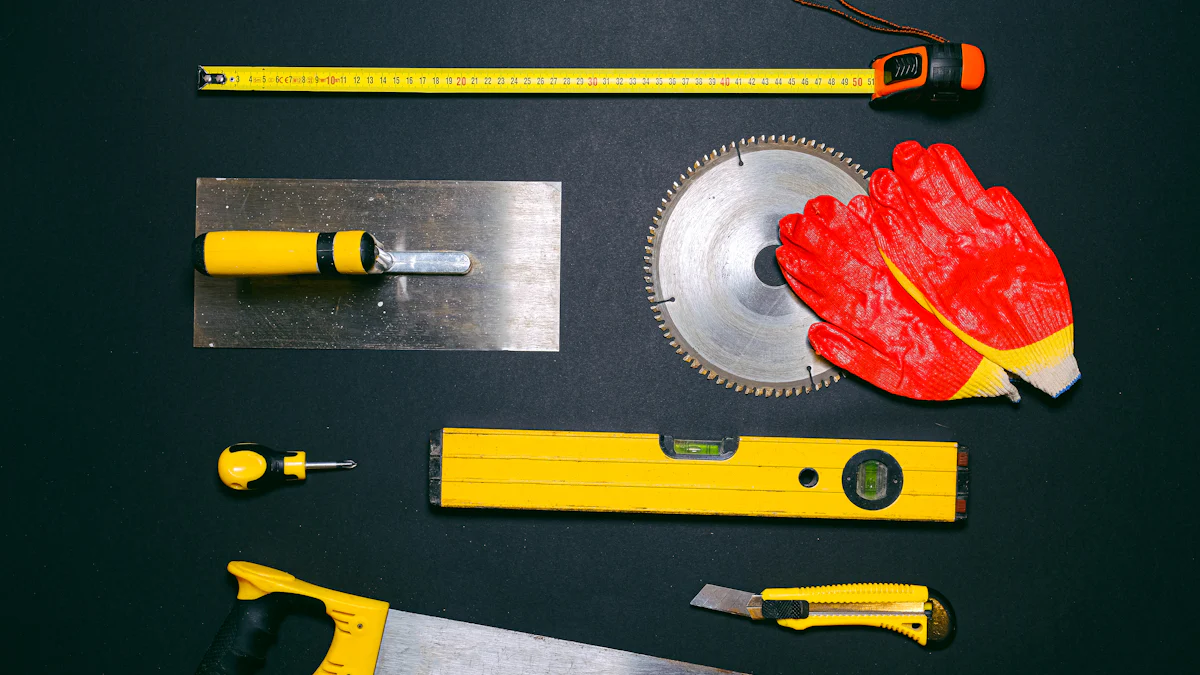
Safety matters a lot when using hand tools. Hand tools cause many injuries each year, ranging from simple cuts to severe fractures. Over 115,000 Americans visit the emergency room annually due to hand-tool-related injuries. Improper use leads to accidents. Here are 3 safety tips when using hand tools: always wear eye protection, use tools that are the right size and type for the specific job, and avoid working with oily or greasy hands. Proper safety measures can prevent these incidents. Always prioritize safety to avoid harm and financial loss.
3 Safety Tips When Using Hand Tools

Tip 1: Always Wear Appropriate Personal Protective Equipment (PPE)
Types of PPE
Safety experts recommend wearing the right personal protective equipment (PPE) for each task. Leather gloves protect your hands from cuts and abrasions. Safety goggles or face shields guard your eyes against flying debris. Ear protection helps when working in noisy environments. Each piece of PPE serves a specific purpose and ensures your safety.
Importance of PPE
Wearing PPE reduces the risk of injury. Safety goggles prevent eye injuries from flying particles. Gloves protect your hands from sharp edges and splinters. Proper PPE can mean the difference between a minor incident and a serious injury. Always wear the appropriate gear to stay safe.
Tip 2: Inspect Your Tools Before Use
Checking for Damage
Before using any hand tool, check it for damage. Look for cracks, rust, or wear that could compromise its effectiveness. A damaged tool can fail during use, leading to accidents. Regular inspections keep your tools in good working condition and ensure your safety.
Ensuring Proper Functionality
Make sure each tool functions correctly before starting your project. Test moving parts to ensure they operate smoothly. Verify that cutting edges are sharp and not dull. Properly functioning tools perform better and reduce the risk of accidents. Always take a moment to check your tools before use.
Tip 3: Use the Right Tool for the Job
Matching Tools to Tasks
Using the right tool for each task is crucial. For example, use a hammer to drive nails, not a wrench. Each tool is designed for specific tasks, and using the wrong one can lead to accidents. Match your tools to the job to work efficiently and safely.
Consequences of Using Wrong Tools
Using the wrong tool can cause serious injuries. A wrench used as a hammer can slip and cause hand injuries. Tools not designed for a specific task can break or malfunction. Always select the correct tool to avoid these risks and ensure a safe working environment.
To wrap up, remember the 3 safety tips when using hand tools. Always wear the right PPE to protect yourself. Inspect your tools before each use to ensure they are in good condition. Use the correct tool for each task to avoid accidents. Prioritize safety every time you work with hand tools. Proper usage not only keeps you safe but also makes your tasks more efficient and effective.
See Also
Scooter Upgrades: High-Quality Parts for Optimal Performance
Winter Bliss: Stay Warm and Cozy with Soft Sock Accessories
Dive into Diverse Sock Options for Both Genders
